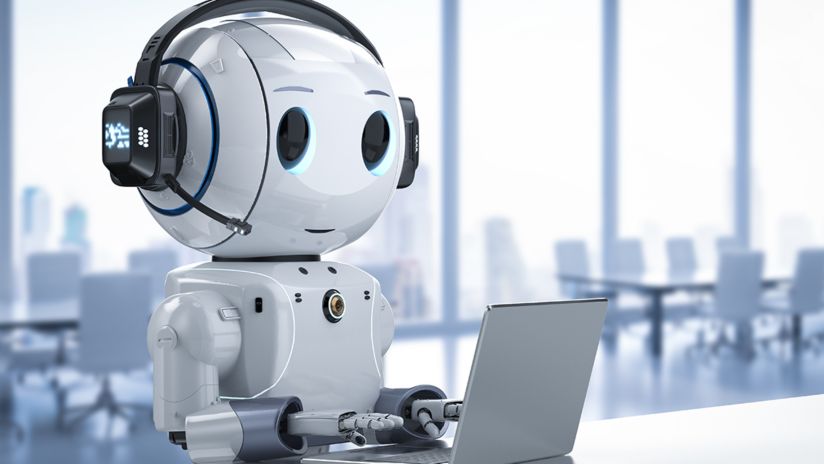5 tips for building bots customers love

With conversational AI maturing, a lot of organisations are warming to the idea of implementing bots that can understand natural language and subsequently engage and solve customers’ most frequent questions—just like human agents can. Contact centre teams see a significant ROI as bots handle repetitive queries across various channels during peak periods when agent resources are limited. However, how well these bots perform in real customer situations has always been a concern.
You’ve likely experienced it. You need help right now with a flight or a recent purchase or your bank account. You can wait for an agent, or you can use a bot—which is always on and always ready to answer your questions. Data shows that customers are open to engaging with a bot. Yet, despite the eagerness to engage, there’s still hesitancy.
Many customers have already had a bad bot experience. Bots are notorious for asking the same question over and over: ‘I’m sorry, I didn’t understand that. Can you repeat it?’ Or there’s the less-than-useful: ‘I’m sorry. I don’t understand.’
Data shows that some customers see bots as a cynical attempt for organisations to avoid providing service. So, while the organisation might see cost savings with using a bot to deflect calls, this might actually erode customer satisfaction and create detractors.
To deliver empathy at scale, companies can’t create barriers to service. Effective bots make customers want to engage. They work with customers—not against them.
And to create effective bots, bot builders must master these five key concepts.
1. Don’t guess your customers’ intents
The heart of a bot is intent management. When a customer communicates with a bot through speech or text, the bot applies natural language models to get to the meaning of the statement. Natural language can be complicated. We can pack a lot of information into a single ask; what we say doesn’t always convey what we mean.
Bot builders spend hours trying to come up with possible things customers will say to convey an intent, such as “order status” or “bill payment.” This can take a long time and it’s fraught with errors. Often, builders start with a small set of utterances (possible statements) and add more over time. Of course, that means the initial bot users are confronted with the dreaded ‘I’m sorry I can’t understand you’ response from the bot.
The solution is to take a data-driven approach to intent. Using data from past interactions to understand how customers phrase their asks. This is becoming increasingly critical as the world moves online and the volume of customer service requests accelerates.
A data-driven approach and using actual data to create and update the intent models on which bots rely will, in turn, create more accurate bots. They’ll understand and answer the question correctly the first time—without asking for endless clarification.
2. Make it personal
Customers don’t like bots that pretend to be human. They know they’re interacting with a machine; they don’t like feeling tricked. That said, talking to a robot can be uncomfortable and difficult. Customers sometimes repeat the same information—like their age or account number—because the robot doesn’t know who they are and it doesn’t remember what they said.
Making the interaction personal means using contextual data to drive the conversation. Look for opportunities to personalise the experience. Here are some examples:
- If a customer has already logged into the system, don’t ask them for their account number. If they trust you enough to give you their data, use it.
- If you’ve already asked a customer for data during a conversation, don’t ask for it again. Remember what they’ve said.
- Understand context. If a customer has been looking at a product and asks about sizes, don’t give them a generic answer about possible sizes you carry. Make the answer relevant.
- Correct typos. If a customer inputs an impossible date or a value that doesn’t fit the range, don’t just say ‘I don’t understand your response’ at the end. Recognise the error and help them fix it. We’re all busy with limited attention spans; don’t make the interaction harder than it has to be.
- Know your limits. If a question is too hard to answer, tell the customer. And don’t leave them stranded.
To build bots that allow for personalisation, they must be able to leverage the data the customer has provided. Bots should be built into the journey, rather than exist outside of the journey as a standalone widget.
3. Avoid dead ends
Bots can only do so much; when they reach the end of their capabilities, the worst experience for a customer is a dead end. This feels like the opposite of empathy.
One way to avoid leading customers to a dead end, is to ensure they can transition from a bot to a live agent. The clunky way is to have the bot say: ‘I can’t help you. Call XXX-XXX-XXXX’. While that eliminates the dead end, it puts the burden on the customer. The customer must do the work themselves and often leave the interaction without a resolution. As an aside, for those scenarios, the bot is often disconnected. If the customer does reach an agent, the agent will be unaware of the previous interaction. Similarly, the bot will be unaware of any agent interactions that have already occurred.
An empathetic transfer is smooth, seamless, and feels like a continuation of the interaction rather than a disruption. The bot should automatically place a customer into the agent queue when the interaction calls for it. With predictive routing, artificial intelligence (AI) is then used to route the customer to the best agent for the desired outcome. Interactions are more successful because the customer is automatically connected to the agent with the right skills, rather than being manually passed from agent to agent.
4. Context is king
For bots, context is everything. Ineffective bots fail because they don’t understand and can’t assess what the customer is asking. Context gives the language models that drive bots the ability to understand the meaning behind the customer request.
Context for bots is multi-dimensional. It’s the ability to understand sentences that are either spoken or written. The bot builder trains this technology—the data used to train, plus the ability to correct and re-train, all provide context.
Context is more than the training data—it’s also the interaction history and the ability for the bot to “see” where the customer is on their journey, including the need to engage a bot or transfer to an agent.
When a bot transfers an interaction to an agent, it takes the context of that interaction and passes it to the agent. This means customers don’t have to repeat things. By providing these smooth, data-driven transitions, bots aren’t a strategy to replace humans. Instead, they unburden agents from routine tasks so they can solve more complex issues. It reduces stress for agents and minimises their frustrations in answering the same questions repeatedly.
5. No bot is an island
A standalone, disconnected bot that’s blind to the customer journey isn’t as effective as one that recognises where the customer has been and has a sense of where the customer is going. A bot that sends you to the same place you just visited would frustrate even the biggest bot enthusiast. A bot that did so continually would be used as an example of customer service gone wrong.
Many DIY solutions can build a bot. These DIY bots can be trained to do a lot, but without the ability to work within the context of the total journey, they remain siloed—unaware of the customer journey. These bots often seem to pop up randomly, providing answers to questions customers don’t have. They sometimes feel like the organisation had a bot and wanted to use it, instead of building one to offer better service.
Before choosing a bot-building tool, developers must ensure they can access interaction data in real-time, historical data on the customer, and all the context needed to ensure this bot is tightly integrated and aware of the journey. What might seem like an easy solution can quickly become a very complex implementation when the developer wants to integrate data. And this becomes even trickier at scale.
When thinking about time to production, consider how much effort you need to spend getting interaction data into a format your bot can understand. Be sure the data can be read, performance doesn’t degrade, and your data isn’t compromised.
The Bottom Line
Contact centre teams can struggle to build bots that are tuned to their needs. They rely on DIY and open-source bot platforms to create generic bots. These bots aren’t easy to build— and they’re scripted, so they don’t understand the context of the customer journey.
Genesys Dialog Engine BOT Flows makes it easier for organisations to build conversational bots that deliver empathy at scale for companies that don’t have in-house data science or bot development teams. It gives contact centres an interface for building bots in an intuitive way while working with other conversation flows—inbound call, chat, or SMS.
Dialog Engine Bot Flows is currently available through the Telstra Genesys Cloud CX™ platform. Ask us how to get started with bots.




